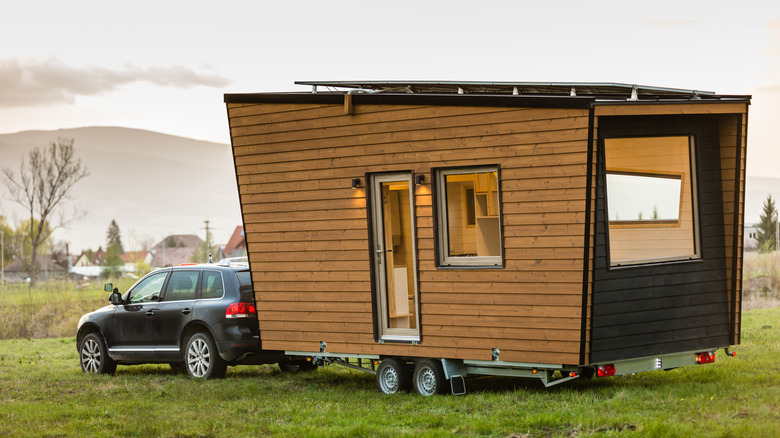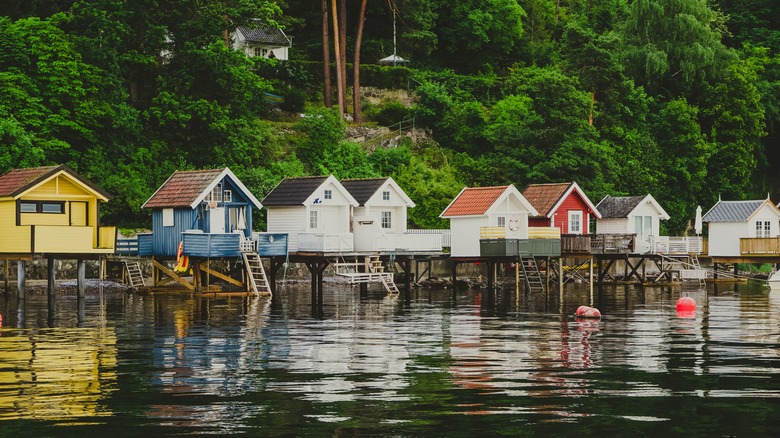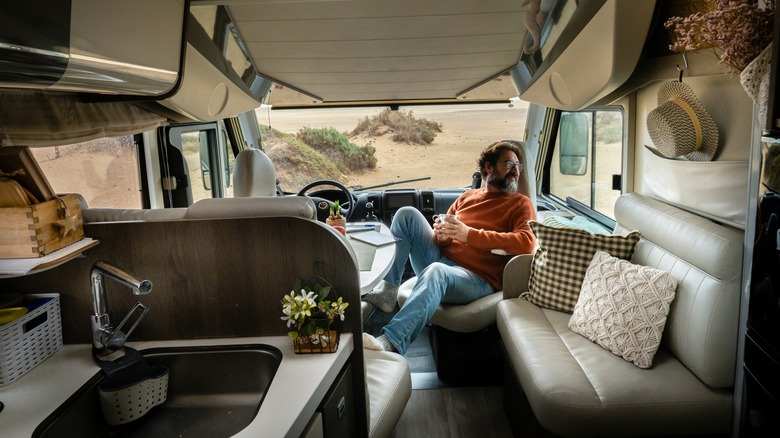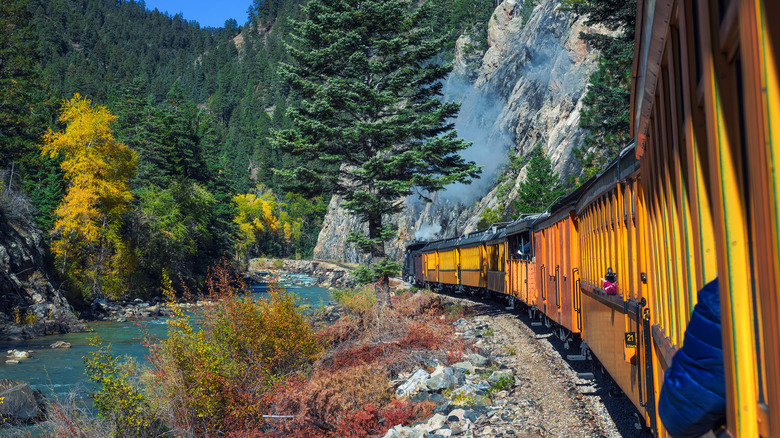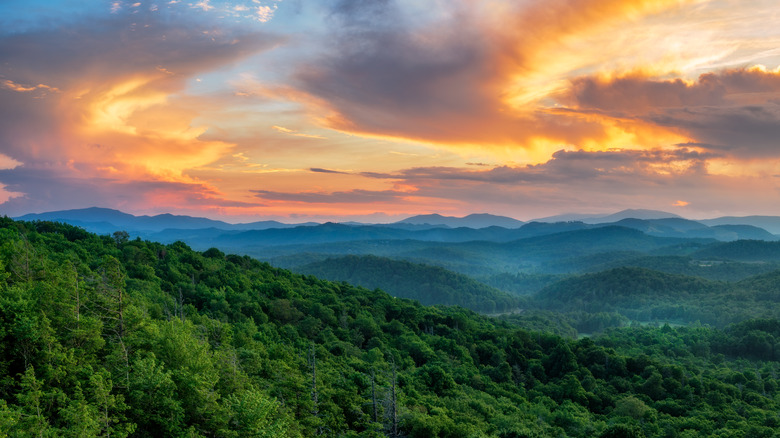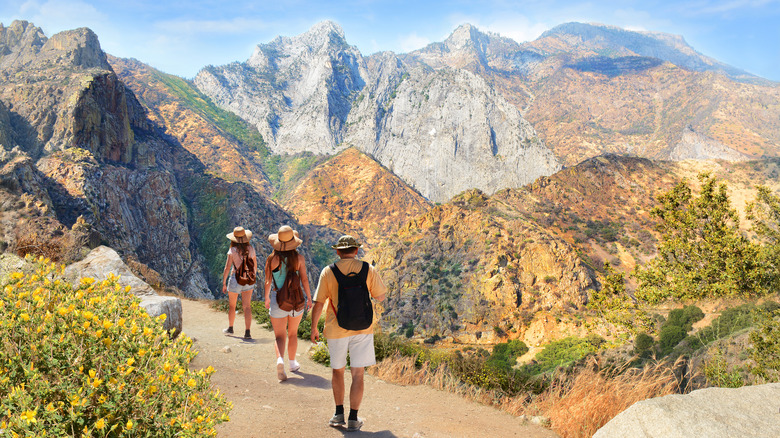The Best City To Park Your Tiny Home
After recent upheavals in the economy, the effects of rampant inflation, and rising rent rates, many people are looking for new alternatives to traditional housing, and if you're thinking of investing in a tiny home, you're not alone. According to a survey by IPX1031, 56% or respondents said that they would consider majorly downsizing their space into something more affordable, eco-friendly, and portable than a typical house or apartment, with many considering a tiny home a more feasible option than attempting to purchase a starter home in the current market.
While living in a smaller, movable space certainly has its benefits, there's a flip side to having all that freedom. Where will you park? There's an entire country to choose from, but different factors like the availability of green space, cost of land, and specific regulations depending on the area are all important to take into account before you set off on your journey. We're here to make that search a little easier, so keep reading if you want to learn about the best city to park your tiny home in the United States.
Permanent versus portable
The requirements for each tiny home are different, depending on its structure, your future plans, and what permits you have. If you're living in something on wheels, like a modified trailer or RV, you have much more flexibility when it comes to where you can park. You also, obviously, have more freedom when it comes to movement, so an option like this is perfect if you're looking to travel for a while before settling down. These options are treated like RVs in most states and cities, so you should look into whether or not you need a special license (via Tiny House Bloom).
A permanent tiny home is subject to more regulations, and if you have a foundation, you have to take the building codes of your area into consideration. A tiny home is technically under 400 square feet, but even with that specific measurement, many states simply don't have any language specifying a strict definition. With that being said, even if your home is small, a permanent structure will likely still be subject to the same codes and regulations as a regular house.
What's important to consider?
If you have a permanent tiny home, you'll likely find yourself either purchasing a small plot of land or moving into a designated tiny home community. Either way, your considerations for location will probably be more similar to typical homebuyers. When you're living in a small space, however, tiny home communities can provide resources that you likely don't have room for, like exercise equipment, pet areas, and pools. Some areas even offer tax incentives for choosing a more sustainable living option.
If you go the portable route, your search will look a little different. According to Tiny Heirloom, some of the easiest spots to park your portable tiny home are RV parks and campgrounds. These spaces guarantee you'll have access to utilities like water, electricity, and sewage, but not all states are created equal when it comes to popularity and accessibility of these resources. As public awareness of tiny homes grows, more communities are welcoming the alternative housing wave, but for now, some areas are more convenient than others.
The top pick: Durango, Colorado
Outdoorsy, sustainability-focused, and scenic, Colorado has always been a top spot for the tiny living movement, and Durango, with its stunning views of the San Juan mountains, is coming in as our top location to park your tiny home. This small city has a mixture of permanent developments along the Animas River and available campgrounds to choose from, and its location makes it an ideal spot for adventurers. You can do just about anything here — skiing, hiking, whitewater rafting — while still having the luxuries of a town nearby (via Durango).
Another added bonus is the sense of community. Year-round, you'll likely find other tiny home enthusiasts and travelers throughout the city, but once a year, Colorado hosts a tiny house festival further north in Brighton. The Colorado Tiny House Festival is one of the largest tiny home events in the country, and a testament to the support and widespread popularity of tiny living in the state.
First runner-up: Flat Rock, North Carolina
Generally speaking, the East Coast is a bit more difficult to travel through with a tiny home. The population density and number of cities means that there aren't as many campgrounds and RV parks as somewhere out West, but Flat Rock, North Carolina, is an exception to this rule. This tiny village with just under 3,500 residents, and nestled just north of the South Carolina border, is home to stunning views of the Blue Ridge Mountains (via Village of Flat Rock).
The Village of Flat Rock has welcomed the tiny living community with open arms, playing host to two Simple Life developments of one- and two-bedroom cottages, a great option if you're looking for a permanent community with amenities like a gym and public swimming pool. If you already have your own tiny home and want something a bit more nomadic, however, there is a wealth of RV parks and campgrounds in the same scenic area.
Second runner-up: Fresno, California
California is one of the most expensive when it comes to cost of living (via World Population Review), but Fresno was one of the first cities to attempt to combat that problem in a sustainable way by allowing and welcoming tiny homes. According to Fresno, the city has a specific set of rules and regulations when it comes to these structures, so there's no worry about gray areas in local laws like in many other locations. If your tiny home passes inspection, you're good to go.
Fresno is so tiny home-friendly, the city even hosts an annual expo. At the Tiny House Expo, builders can show off their recent projects, speakers can share their experience and expertise, and tiny home enthusiasts can interact with a like-minded community. If you're looking for a spot to park, either permanently or temporarily, this area is one of the easiest and most accessible places to do so.

